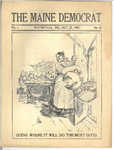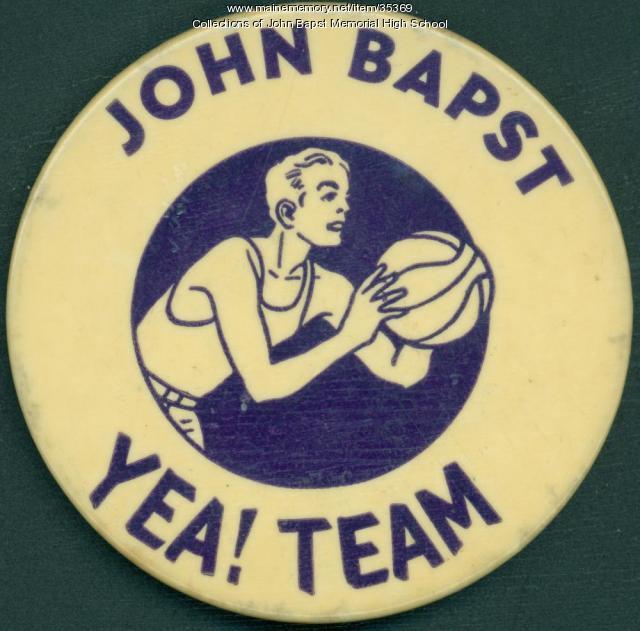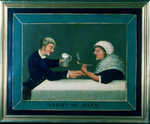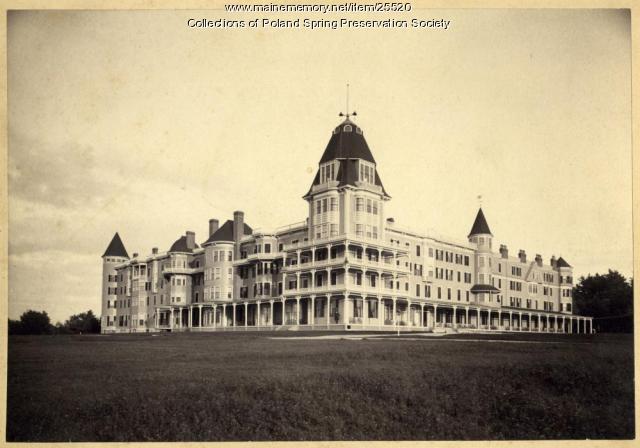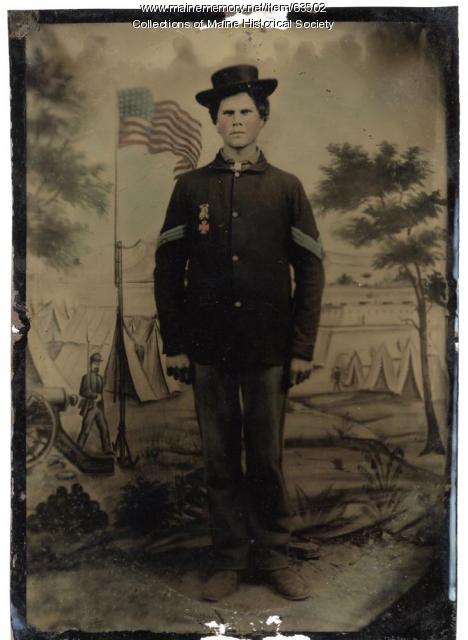Keywords: Regulate
- Historical Items (63)
- Tax Records (0)
- Architecture & Landscape (0)
- Online Exhibits (29)
- Site Pages (23)
- My Maine Stories (4)
- Lesson Plans (1)
Online Exhibits
Your results include these online exhibits. You also can view all of the site's exhibits, view a timeline of selected events in Maine History, and learn how to create your own exhibit. See featured exhibits or create your own exhibit
Exhibit
Music in Maine - Drumsticks, 1861
"Regulation drumsticks were normally made from rosewood, and were 16 to 17 inches long. View additional information about this item on the Maine…"
Exhibit
Surgeon General Alonzo Garcelon
Alonzo Garcelon of Lewiston was a physician, politician, businessman, and civic leader when he became Maine's surgeon general during the Civil War, responsible for ensuring regiments had surgeons, for setting up a regimental hospital in Portland, and generally concerned with the well-being of Maine soldiers.
Exhibit
Rum, Riot, and Reform - Influential & Interesting Documents
"951, vol. 14 Public drinking establishments were regulated in Maine as early as 1636 when tavern keepers were held accountable for allowing anyone to…"
Exhibit
Rum, Riot, and Reform - Politics and Enforcement
"… farmers were quite willing to support laws to regulate drinking by immigrants and big city folks, they were against the regulation of cider, a…"
Exhibit
Rum, Riot, and Reform - 1620 to 1820: New England's Great Secret
"Legal attempts at control included regulation of taverns and punishments for disruptive or destructive tipplers."
Exhibit
Maine's ample woods historically provided numerous game animals and birds for hunters seeking food, fur, or hides. The promotion of hunting as tourism and concerns about conservation toward the end of the nineteenth century changed the nature of hunting in Maine.
Exhibit
Northern Threads: Civil War-era clothing
An exhibit vignette within "Northern Threads, Part 1," featuring American Civil War civilian and military clothing, 1860 to 1869.
Exhibit
John Bapst High School was dedicated in September 1928 to meet the expanding needs of Roman Catholic education in the Bangor area. The co-educational school operated until 1980, when the diocese closed it due to decreasing enrollment. Since then, it has been a private school known as John Bapst Memorial High School.
Exhibit
Rum, Riot, and Reform - Taverns, People, and Scenes
"… small ports of Maine, where taverns were closely regulated. This is not to say drunkenness and fistfights did not occur Downeast, but simply that…"
Exhibit
Liberty Threatened: Maine in 1775
At Lexington and Concord, on April 19, 1775, British troops attempted to destroy munitions stored by American colonists. The battles were the opening salvos of the American Revolution. Shortly, the conflict would erupt in Maine.
Exhibit
Clean Water: Muskie and the Environment
Maine Senator Edmund S. Muskie earned the nickname "Mr. Clean" for his environment efforts during his tenure in Congress from 1959 to 1980. He helped created a political coalition that passed important clean air and clean water legislation, drawing on his roots in Maine.
Exhibit
A Brief History of Colby College
Colby originated in 1813 as Maine Literary and Theological Institution and is now a small private liberal arts college of about 1,800 students. A timeline of the history and development of Colby College from 1813 until the present.
Exhibit
CODE RED: Climate, Justice & Natural History Collections
Explore topics around climate change by reuniting collections from one of the nation's earliest natural history museums, the Portland Society of Natural History. The exhibition focuses on how museums collect, and the role of humans in creating changes in society, climate, and biodiversity.
Exhibit
Best Friends: Mainers and their Pets
Humans and their animal companions began sharing lives about twenty-five thousand years ago, when, according to archaeological evidence and genetic studies, wolves approached people for food scraps. As agriculture grew and people began storing grains around ten thousand years ago, wild cats helped keep rodents at bay and feline populations thrived by having a steady food source. Over time, these animals morphed into the dogs and cats we know today, becoming our home companions, our pets.
Exhibit
The boundaries of Maine are the product of international conflict, economic competition, political fights, and contested development. The boundaries are expressions of human values; people determined the shape of Maine.
Exhibit
Poland Spring: Summering in Fashion
During the Gilded Age at the end of the nineteenth century, Americans sought to leave increasing urban, industrialized lives for the health and relaxation of the country. The Poland Spring resort, which offered a beautiful setting, healing waters, and many amenities, was one popular destination.
Exhibit
Westbrook Seminary: Educating Women
Westbrook Seminary, built on Stevens Plain in 1831, was founded to educate young men and young women. Seminaries traditionally were a form of advanced secondary education. Westbrook Seminary served an important function in admitting women students, for whom education was less available in the early and mid nineteenth century.
Exhibit
Passing the Time: Artwork by World War II German POWs
In 1944, the US Government established Camp Houlton, a prisoner of war (POW) internment camp for captured German soldiers during World War II. Many of the prisoners worked on local farms planting and harvesting potatoes. Some created artwork and handicrafts they sold or gave to camp guards. Camp Houlton processed and held about 3500 prisoners and operated until May 1946.
Exhibit
Wired! How Electricity Came to Maine
As early as 1633, entrepreneurs along the Piscataqua River in southern Maine utilized the force of the river to power a sawmill, recognizing the potential of the area's natural power sources, but it was not until the 1890s that technology made widespread electricity a reality -- and even then, consumers had to be urged to use it.
Exhibit
Among the Lungers: Treating TB
Tuberculosis -- or consumption as it often was called -- claimed so many lives and so threatened the health of communities that private organizations and, by 1915, the state, got involved in TB treatment. The state's first tuberculosis sanatorium was built on Greenwood Mountain in Hebron and introduced a new philosophy of treatment.
Exhibit
Home: The Longfellow House & the Emergence of Portland
The Wadsworth-Longfellow house is the oldest building on the Portland peninsula, the first historic site in Maine, a National Historic Landmark, home to three generations of Wadsworth and Longfellow family members -- including the boyhood home of the poet Henry Wadsworth Longfellow. The history of the house and its inhabitants provide a unique view of the growth and changes of Portland -- as well as of the immediate surroundings of the home.
Exhibit
One Hundred Years of Caring -- EMMC
In 1892 five physicians -- William H. Simmons, William C. Mason, Walter H. Hunt, Everett T. Nealey, and William E. Baxter -- realized the need for a hospital in the city of Bangor had become urgent and they set about providing one.
Exhibit
This Rebellion: Maine and the Civil War
For Mainers like many other people in both the North and the South, the Civil War, which lasted from 1861-1865, had a profound effect on their lives. Letters, artifacts, relics, and other items saved by participants at home and on the battlefield help illuminate the nature of the Civil War experience for Mainers.
Exhibit
Paper has shaped Maine's economy, molded individual and community identities, and impacted the environment throughout Maine. When Hugh Chisholm opened the Otis Falls Pulp Company in Jay in 1888, the mill was one of the most modern paper-making facilities in the country, and was connected to national and global markets. For the next century, Maine was an international leader in the manufacture of pulp and paper.



